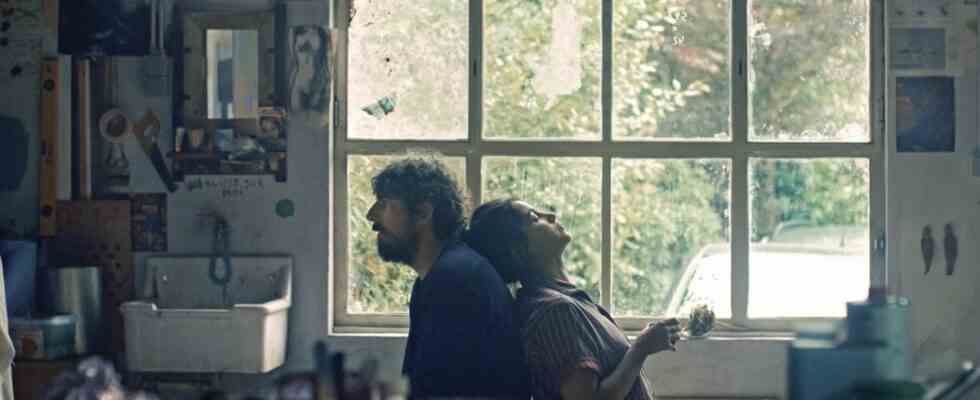What do artists dream of? About colors as rich as Gaugin or Van Gogh, about irrepressible work energy, a studio in the south, a gallery owner who makes money from the pictures, and a family that loves and protects you. Even if you sometimes go crazy, or rather: just then.
What does the audience know, today, in 2022? That art isn’t that easy, that male artist figures are problematic, that the sphere of pure aesthetics doesn’t exist and that artists are people who abuse others, cause misfortune, and can be ill. And that their suffering or that of others is not worth even the greatest creative output.
Joachim Lafosse dreams with the artists and knows what the public knows in his film “The Restless”, which was screened in competition at the Cannes Film Festival last year. It’s about a successful painter, Damien (Damien Bonnard), who lives with his family near the sea. His wife, Leïla (Leïla Bekhti), is also an artist as a carpenter, their son, Amine, goes to school. Everything is wonderful, the scenery and color palette of the film are pure Gauguin territory, everything shimmering in turquoise, blue, green and yellow. In such an environment fantastic paintings succeed, which Damien’s dealer sells up and on.
But restlessness creeps into this tableau. The artist goes out to sea with his son in a boat, jumps into the water to swim back, lets the child steer back on his own. This is progressive parenting with a lot of leap of faith, but also a little crazy. He cooks a fantastic meal, umpteen dishes at once, then leaves everything as it is. He cannot sleep at night, locks himself in his studio and works restlessly. And as he sits in the garden, we notice that the corners of the picture become blurred, the beautiful picture looks distant and hazy. The crises become more severe, and finally Damien is admitted to a psychiatric ward, diagnosed with bipolar disorder.
Does the woman have any choice but to sacrifice herself?
Increasingly he ignores the needs of his surroundings, sometimes acting encroachingly. We know: Here is a body that is suffering. Yet we find it uncomfortable, frightening. Until he has calmer phases again, is lovable as before. But for how long?
So, are we watching an obsessive male artist genius going berserk while his wife stays with him and touchingly sacrifices herself for him? Although we know there is a reason for this, we begin to hate the man a little and feel sorry for Leïla, who hardly has a life of her own anymore. Despite her own projects and people around her, isn’t the role of the woman too much that of the mothering caretaker? And didn’t he just take his medication to be able to paint better, to have the suffering of creating great works? Yes, the man is bipolar, but his behavior when he is down is similar to that of a narcissist. And we have to watch this behavior, like Leïla, like Amine and like Damien’s father – whether we like it or not.
We’re following a patient who hasn’t been hospitalized for too long. But who, as luck would have it, is also an artist. This juxtaposition of art and illness is what makes the film itself a bit malade: we never only see the patient, but always also the artist egomaniac. The film never quite closes the gap that juxtaposes the stylized beauty of the landscape and the stark reality of the disease, and presents the alternative: either make art and go nuts. Or be healthy and not make art.
So apart from depicting the illness, the film expresses a depressive attitude towards art (towards filmmaking, painting, etc.) – perhaps a sign of our times. It is important to sharpen the view of the contexts in which art is created. However, “The Restless” shows that for films it is also necessary to pathologize one’s own character as a work of art.
The Restless, Belgium, Luxembourg, France, 2021 – Director and script: Joachim Lafosse. Camera: Jean-François Hensgens. With Damien Bonnard, Leïla Bekhti, Gabriel Merz Chammah. Eksystent Film, 118 min. Theatrical release: July 14, 2022.

